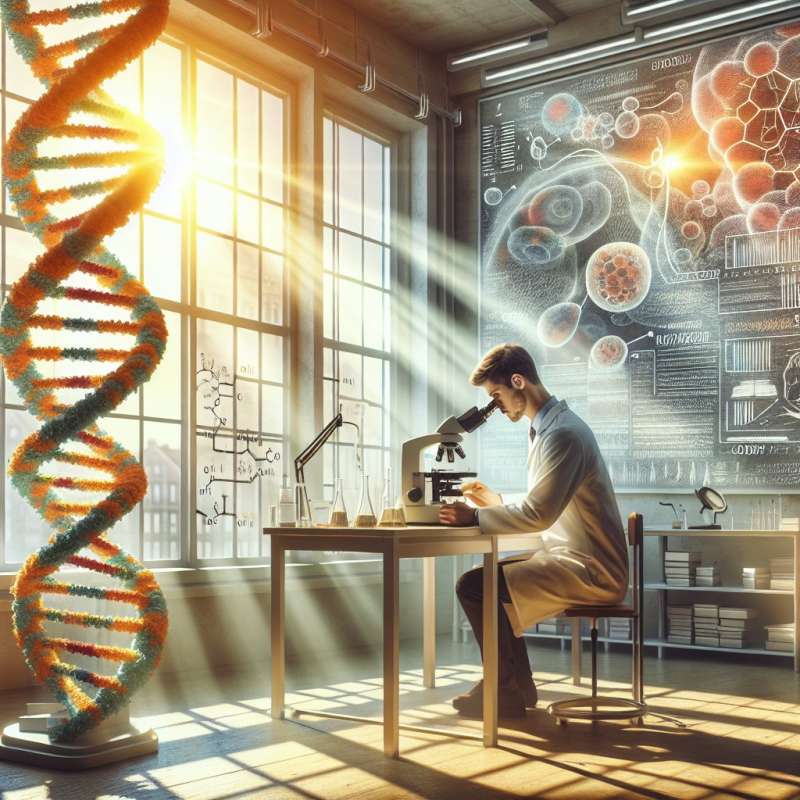
Introduction to DNA
DNA, or deoxyribonucleic acid, is a molecule that carries genetic instructions. Found in the nucleus of cells, it dictates the development, functioning, growth, and reproduction of all known living organisms and many viruses.
Structure of DNA
DNA has a double helix structure, resembling a twisted ladder. The 'rungs' consist of nitrogenous base pairs: adenine with thymine, and cytosine with guanine. This structure was discovered by James Watson and Francis Crick in 1953.
DNA Replication Process
During cell division, DNA replicates itself. Enzymes like helicase unwind the DNA, and DNA polymerase synthesizes new strands by matching nucleotides to the original strand, ensuring genetic information is accurately passed on.
Non-Coding DNA Functions
Surprisingly, only about 1.5% of human DNA codes for proteins. The rest, once considered 'junk,' has important roles in regulation, gene expression, and maintaining chromosome structure. Some sections help in the repair of DNA and others in evolutionary processes.
Human DNA Uniqueness
Each human's DNA is 99.9% identical to every other human's. However, the 0.1% variation accounts for all the differences between individuals. These tiny differences are responsible for unique traits like eye color, height, and susceptibility to certain diseases.DNA in Outer Space
DNA can survive in space for years, enduring extreme temperatures and radiation, potentially aiding future space exploration and astrobiology research.
What molecule carries genetic instructions?
Ribonucleic acid
Deoxyribonucleic acid
Amino acid
Company